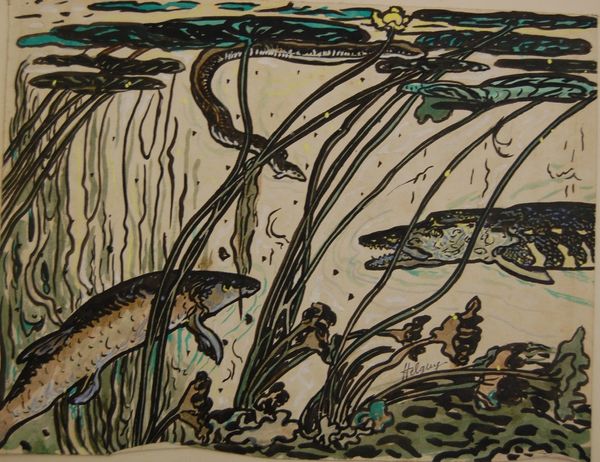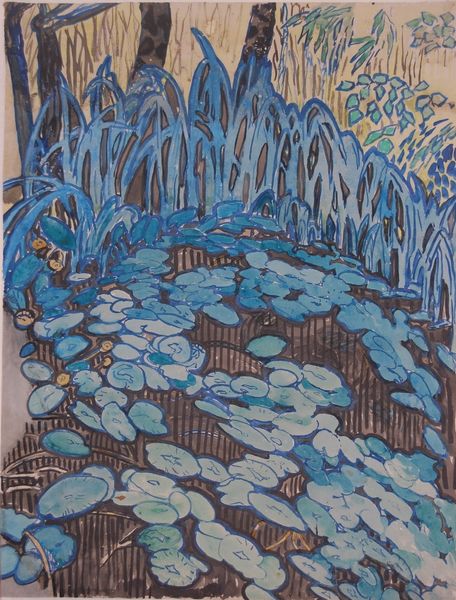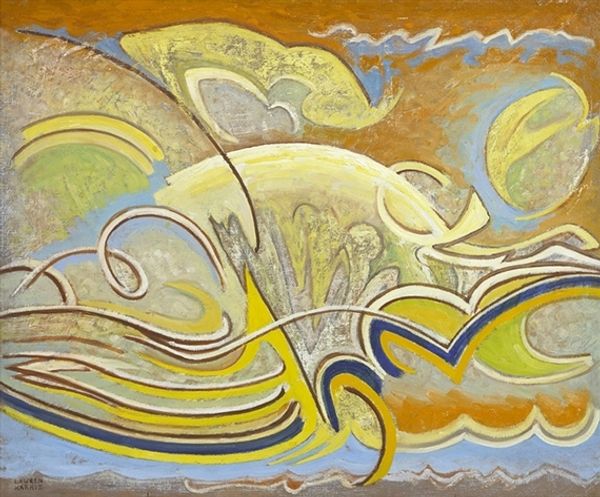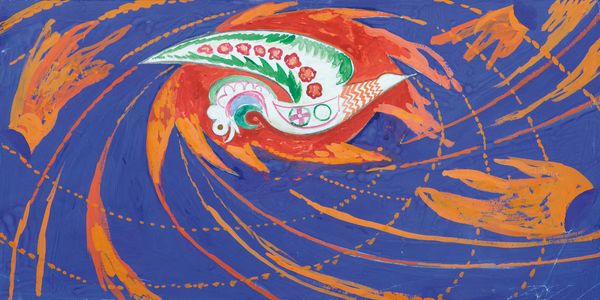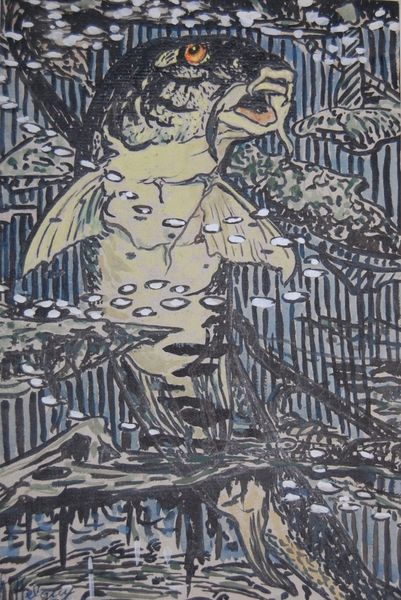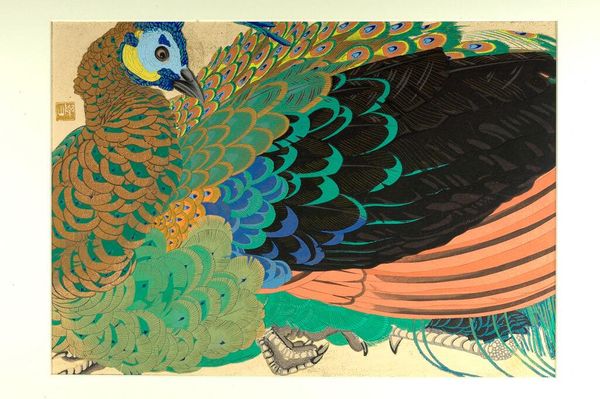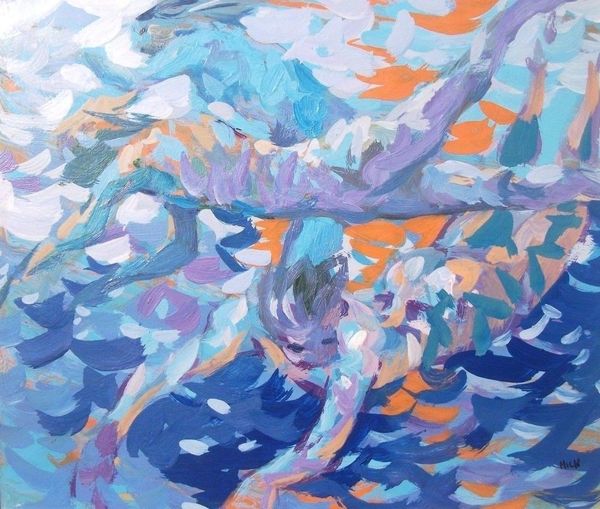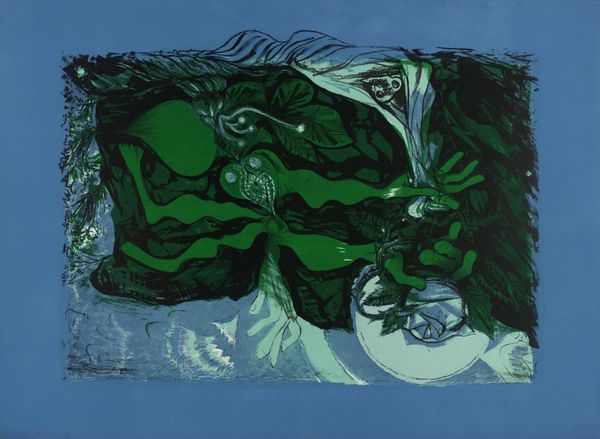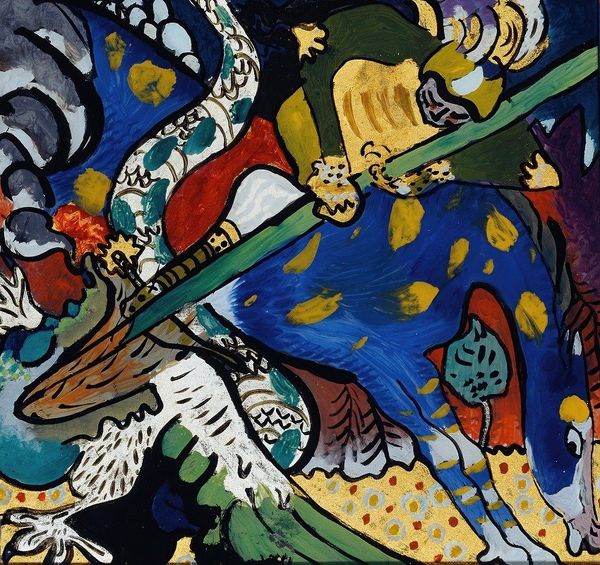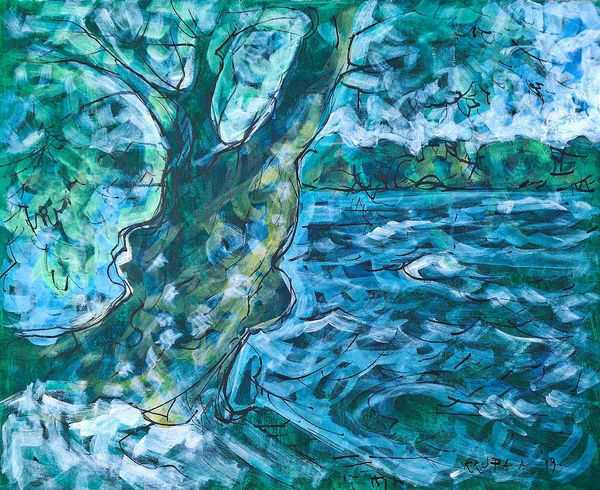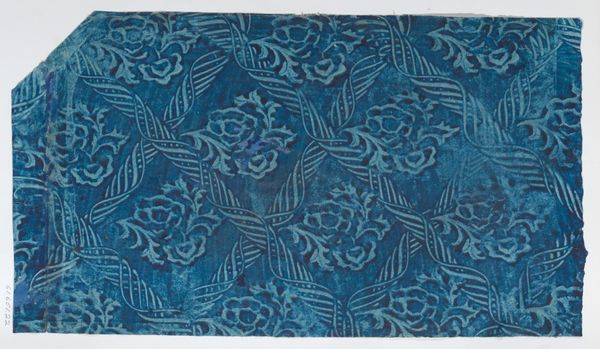
Dimensions: 56 x 66 cm
Copyright: Public domain
Curator: Looking at Hélène Guinepied's "Pike," created in 1922, I'm immediately struck by the raw energy, almost violent, in the bold blues and oranges. Editor: Yes, the chromatic intensity is palpable. Observe how the application of watercolor and acrylic on canvas creates a vibrant tension between representation and abstraction. What catches your eye formally? Curator: Well, knowing Guinepied's commitment to depicting marginalized figures, these pikes, suspended in this undefined space, feel symbolic. Could this be a commentary on the vulnerability of certain populations? Are they trapped, fighting currents not of their making? The context of post-war France surely shaped her vision. Editor: Perhaps. However, one could also argue that the abstracted forms of the fish and the fluid brushstrokes dissolve the literal, prompting a reading of the image as a study in visual dynamics, the semiotics of form in nature. Curator: But isn't the personal always political? Considering the artist's dedication to social reform and pacifist ideologies, a purely formal reading seems... incomplete. Shouldn't we consider the painting through a lens that acknowledges socio-political power structures? Editor: Undoubtedly, intersecting readings are valid, but notice how the impressionistic technique breaks down rigid representational boundaries, allowing for a fluidity that defies singular, definitive readings. It exists beyond a specific narrative, no? Curator: It's compelling how Guinepied merges her avant-garde approach with her values, urging viewers to think critically about systems and oppression. It feels profoundly relevant, even now. Editor: Ultimately, it's in the nuanced interplay between formal elements and socio-historical context that this artwork generates meaning, offering insights on both perception and power.
Comments
No comments
Be the first to comment and join the conversation on the ultimate creative platform.
